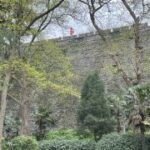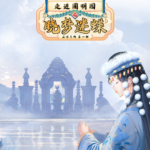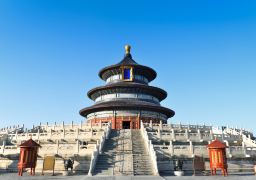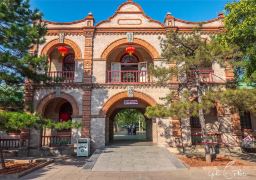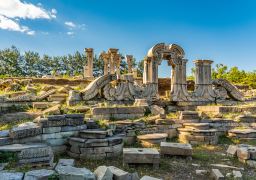The Site Park of the Source of the Grand Canal is located on the right bank of the Dongsha River in Changping District, north of the Jingmi Diversion Canal. It contains the Bai Fu Quan ruins of the Grand Canal, a national key cultural relics protection unit. The mountain where the ruins are located is called Longshan, and there have been many springs since ancient times. During the Yuan Dynasty, in order to divert water to support shipping, the scientist Guo Shoujing took Bai Fu Quan as the upstream water source at the northern end of the Grand Canal.
He built the Bai Fu Wengshan River to converge various springs in the Western Hills and diverted the water to Wengshan Po (now Kunming Lake in the Summer Palace). Then, through Gaoliang River, it enters Jishuitan (now Shichahai), connecting the Tonghui River and solving the problem of water source for shipping in Dadu (now Beijing). The Bai Fu Quan ruins of the Grand Canal are the physical remains of the water diversion source of the above water conservancy project. In the Yuan Dynasty, the Dragon King Temple of Du was built on the top of Longshan where it is located. During the Ming and Qing Dynasties, the Nine Dragon Pond was built at the water outlet of Bai Fu Quan and once became an important local folk activity place. During the Longqing period of the Ming Dynasty, Bai Fu Quan was included in one of the ‘Eight Scenes of Yanjing’ as ‘Dragon Spring Spraying Jade’. During the Kangxi period of the Qing Dynasty, ‘Dragon Spring Spraying Jade’ was renamed as ‘Dragon Spring Washing Jade’. The first phase of the Site Park of the Source of the Grand Canal is mainly the core area of heritage in the Longshan area. It extends to the Changping New City Riverside Forest Park in the east, the existing Huazhuang Road in the west, the planned North Jingmi Diversion Canal Road in the south, and the north of Longshan in the north, with a total land area of 11. 6 hectares. The first-phase project conducts cultural relic protection and renovation of the Nine Dragon Pond, the Dragon King Temple of Du and the Longquan Zen Temple, restores the historical ancient scene of ‘Dragon Spring Washing Jade’, adds scenic spots such as Long Flow Benefiting All and Clear Sound of Mountains and Waters, and four nodes including Canal Source, Water Diversion Platform, Listening to Springs Place, and Reading Springs Garden, inheriting and protecting the historical and cultural sources of the Grand Canal and improving the landscape and environmental quality of the Bai Fu Quan ruins. Open hours: Open from 09:00 to 18:00 all year round.The Site Park of the Source of the Grand Canal
The Site Park of the Source of the Grand Canal is located on the right bank of the Dongsha River [&h[...]


